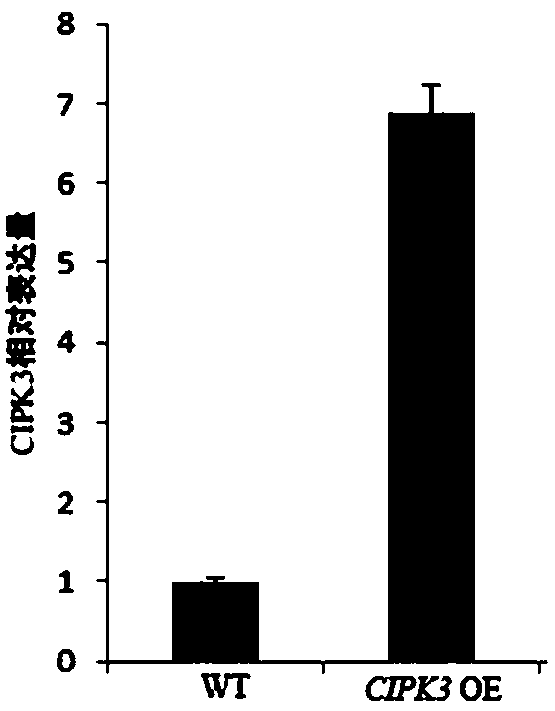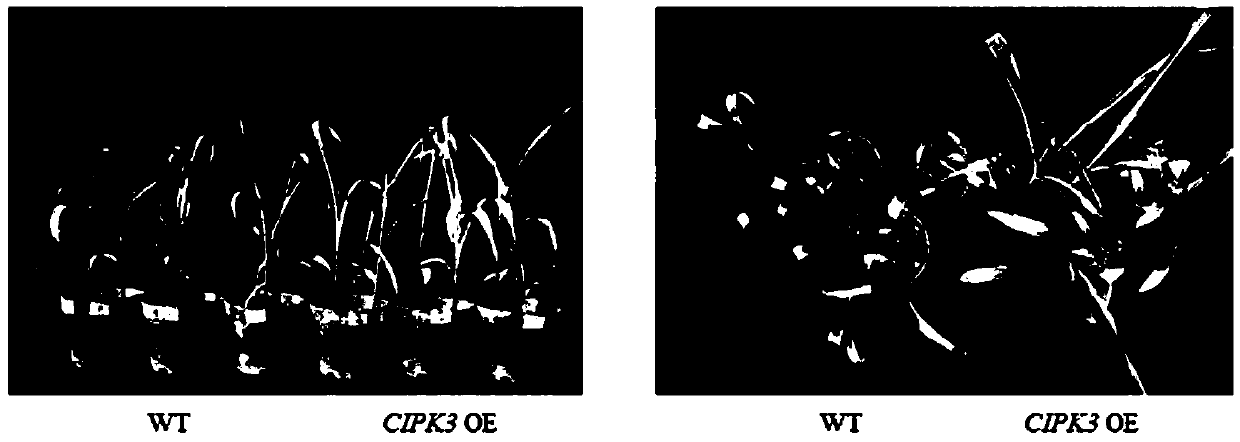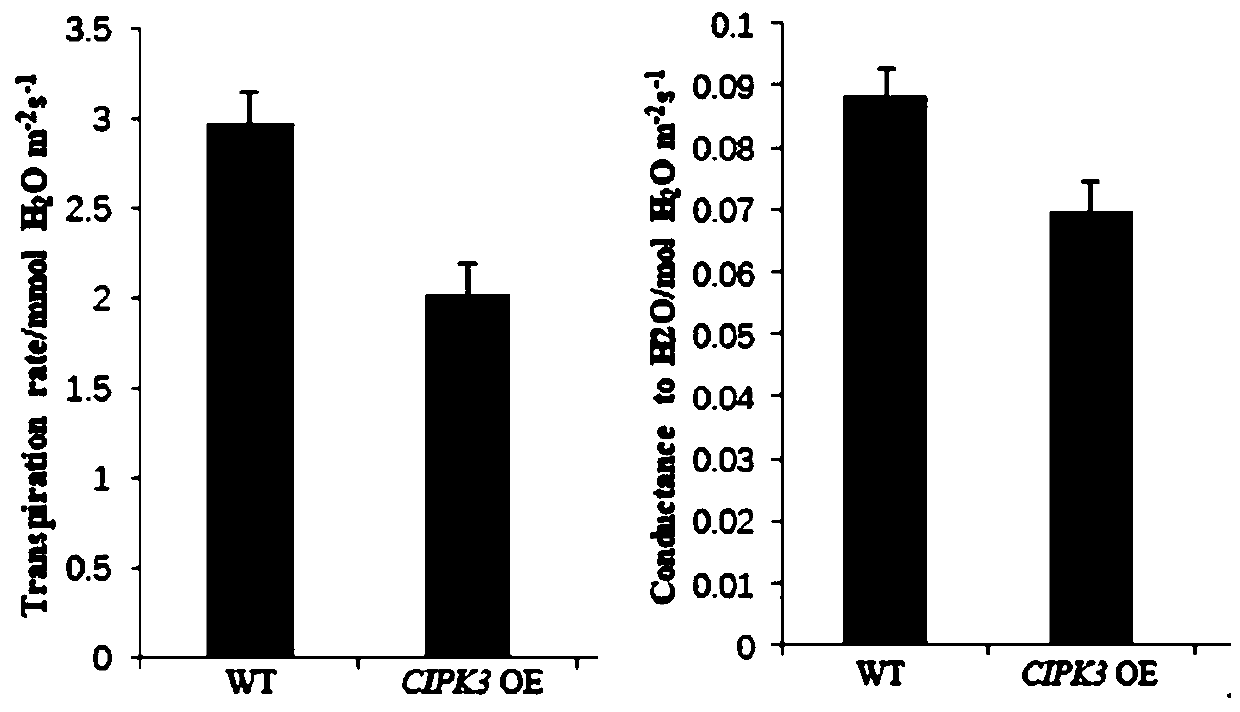Application of CBL-interacting protein kinases (CIPK)3 protein and encoding genes thereof to plant drought resistance
A technology for transgenic plants and plants, applied in applications, plant products, genetic engineering, etc., can solve the problems of unpredictable results, long breeding cycle, etc., and achieve the effects of reducing water loss, short breeding time, and strong purpose.
- Summary
- Abstract
- Description
- Claims
- Application Information
AI Technical Summary
Problems solved by technology
Method used
Image
Examples
Embodiment 1
[0040] Construction and detection of embodiment 1 CIPK3 gene overexpression vector
[0041] Total RNA was extracted from B73 corn (Zea mays L.), and cDNA was obtained by reverse transcription. The cDNA was used as a template, and F and R were used as primers to amplify the CIPK3 gene. on the carrier.
[0042] CIPK3 gene overexpression vector construction method is as follows:
[0043] (1) The total RNA of B73 corn was extracted with the RNA extraction kit of Magen Company, and the specific steps were referred to the instructions of the kit.
[0044] (2) Use the reverse transcription kit from Thermo Company to reverse transcribe the RNA into cDNA, and refer to the kit instructions for specific steps.
[0045] (3) Using cDNA as a template, F and R as primers, amplify the cDNA of the CIPK3 gene (as shown in SEQ ID NO.3, its encoded amino acid sequence is as shown in SEQ ID NO.1), and run electrophoresis on the amplified product The gel was cut and recovered, and the recovery m...
Embodiment 2
[0053] Construction and detection of embodiment 2 CIPK3 gene overexpression plant
[0054] The pBCXUN-CIPK3 overexpression plasmid constructed in Example 1 was transformed into competent Agrobacterium strain EHA105 by heat shock method, and positive clones were identified by colony PCR. Inoculate a single colony of Agrobacterium correctly identified in 2-3 mL of liquid medium containing 100 μg / mL kanamycin and 50 μg / mL rifampicin, culture with shaking at 28 °C overnight, and transfer a large amount of liquid containing antibiotics the next day Shake culture in the medium, collect the cells after several transfers, and resuspend to OD 600 Between 0.8-1.0. The obtained recombinant Agrobacterium suspension was used to infect the young B73 maize embryos picked out under aseptic conditions, and the callus was induced to form seedlings. The transgenic plants were self-propagated to obtain the T3 generation for subsequent experiments. The RNA of different transgenic inbred lines w...
Embodiment 3
[0055] Example 3 CIPK3 gene overexpression maize drought treatment phenotype detection
[0056] Add 140g of soil to each small pot, add water to the tray, put 4 corn seeds with CIPK3 gene overexpression and the seeds of non-transgenic control plant B73 in each small pot, cover 50mL of soil, absorb the water and remove the remaining Pour off the water, remove a seedling with uneven growth after emergence, add 1L of water in the tray, pour off the water after it is full, start the drought treatment, and observe the drought treatment phenotype of the control and transgenic plants. Three pots of control and transgenic plants were replicated. The result is as figure 2 As shown, the growth condition of the transgenic plants overexpressing CIPK3 was significantly better than that of the control plants, and the leaf wilting degree was significantly lower than that of the control plants, indicating that the transgenic plants overexpressing the CIPK3 gene had stronger drought resistan...
PUM
 Login to View More
Login to View More Abstract
Description
Claims
Application Information
 Login to View More
Login to View More - R&D
- Intellectual Property
- Life Sciences
- Materials
- Tech Scout
- Unparalleled Data Quality
- Higher Quality Content
- 60% Fewer Hallucinations
Browse by: Latest US Patents, China's latest patents, Technical Efficacy Thesaurus, Application Domain, Technology Topic, Popular Technical Reports.
© 2025 PatSnap. All rights reserved.Legal|Privacy policy|Modern Slavery Act Transparency Statement|Sitemap|About US| Contact US: help@patsnap.com



